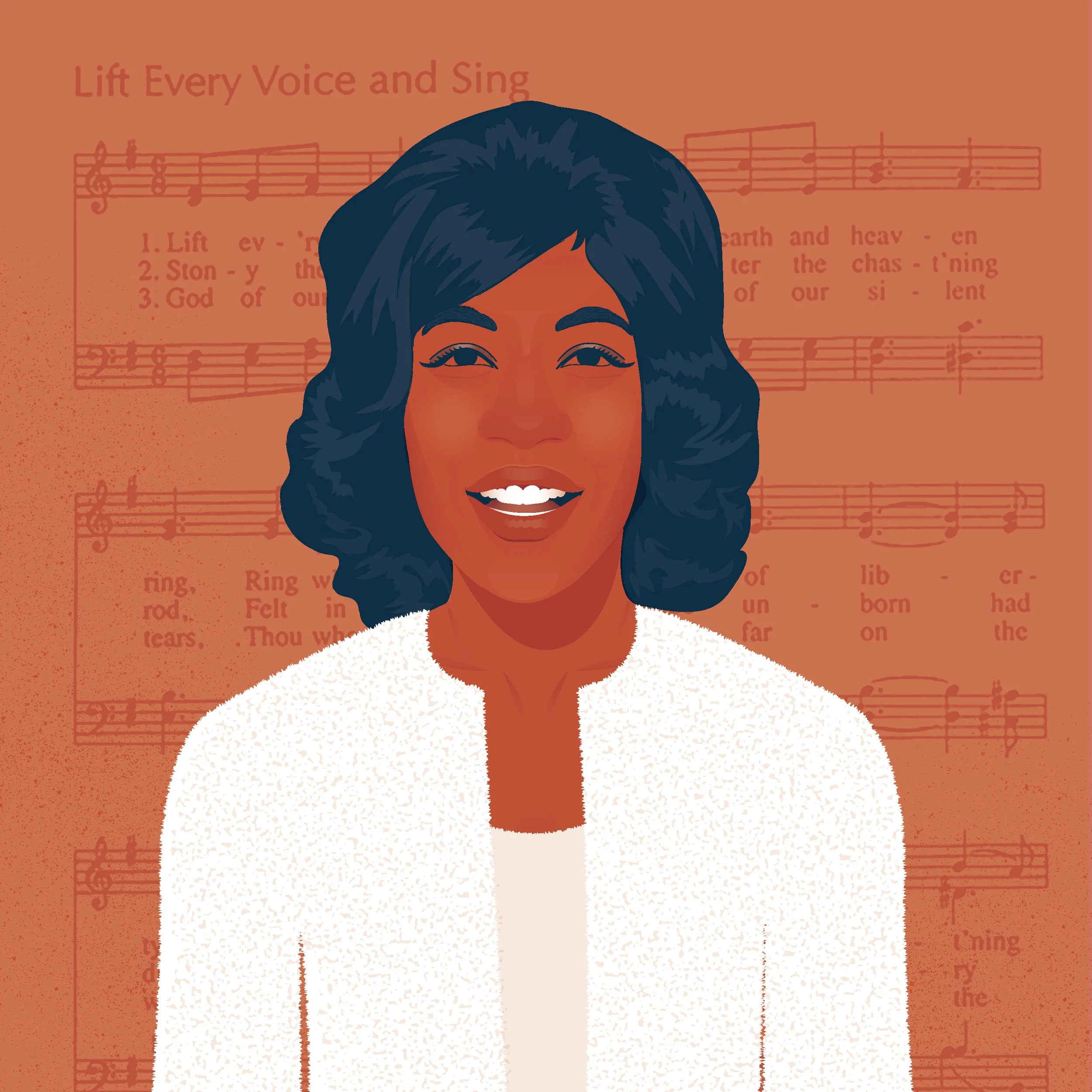
Educate and Elevate: The Role of Soul in the Fight for Black Empowerment
In the 1960s, music became more than just a form of entertainment—it was a call to action. Black artists, recognized for their powerful voices, were tapped to lead the charge for social change, using their influence to push for education as a key avenue of empowerment. Through stirring anthems and passionate advocacy, they turned the stage into a battleground for civil rights, proving that education and music together could shatter barriers and ignite a movement toward equality.

When Soul Music Marched with Selma
In 1965, America was unraveling. The Vietnam War raged on, young men were drafted into an uncertain fate, and the shadow of nuclear annihilation loomed large. At home, the Civil Rights Movement was reaching a fever pitch, while unrest in the Middle East and the high-stakes space race added to the sense that the world was teetering on the edge.

Sam’s Message: From Chains to Change
In 1959, singer and songwriter Sam Cooke had a chance encounter with a group of Black prisoners working on a highway during one of his tours. Moved by their plight, Cooke felt a deep sympathy for them and, reportedly, gave them cartons of cigarettes. That moment left a lasting impression on him and would go on to inspire his powerful anthem, “Chain Gang,” which was released on RCA Victor on July 26, 1960.

The Rhythm of the Movement: Soul Music and the March on Washington
In the blistering heat of August 1963, the air in Birmingham was thick with more than just the Southern sun—it carried the weight of a city fractured by Bull Connor’s brutal tactics and the hope of a movement refusing to yield. Against this backdrop of fire hoses, snarling police dogs, and defiance, the Shirelles—trailblazing queens of soul and pioneers—took the stage at Miles College’s Salute to Freedom benefit concert on August 5.

A Tale of Two Anthems: “Dancing in the Street” and “Lift Ev’ry Voice and Sing”
1964 was a seismic year, where Motown’s rhythm met the pulse of a changing America. As President Lyndon Johnson signed the Civil Rights Act into law, Motown celebrated its own revolution. The Supremes, once dismissed as “the no-hit Supremes,” rewrote their narrative with three back-to-back chart-toppers: “Where Did Our Love Go,” “Baby Love,” and “Come See About Me,” cementing their place as pop royalty. The Temptations, powered by the electrifying voice of David Ruffin, were poised to deliver 1965’s timeless anthem, “My Girl.”

Soul at the Shore and at The Strip
After the Civil Rights Act of 1964 was signed into law, beach towns across the South began to change dramatically. Before the landmark legislation, Black families flocked to destinations that welcomed them—places where they could dine, find lodging, and enjoy the sand and sea without restriction. Where Black families traveled to shore, so did the Soul music artists. Black-owned hotels and businesses flourished in spots along The Grand Strand, especially in communities like Atlantic Beach and North Myrtle Beach in South Carolina. Known as "The Black Pearl," Atlantic Beach became a lively hub where inland farmers, local workers, and church groups gathered every weekend from April through October, creating a vibrant and memorable summer tradition.

Part 3—Harmonies Amid Hostility
When “Green Onions” by Booker T. & the MGs started picking up steam, Stax Records knew they had something special on their hands—even if it didn’t seem that way at first. Released as a B-side on their Volt label, radio DJs were bypassing the A-side track, “Behave Yourself,” in favor of the infectious groove of “Green Onions.” Soon, the record exploded, leaving the label scrambling to meet the demand. Stax co-founder Jim Stewart recalled, “It broke overnight and we couldn’t get the records out fast enough.”

Part 2—Touring Through the Jim Crow South
After a few exhilarating days of performing and exploring Washington, D.C.—the hometown of Marvin Gaye—the Motor Town Special journeyed north to Boston, Buffalo, and Connecticut, where they were met with warm receptions. But as the bus headed southward into the American South, the young artists were about to face challenges they had never encountered before. This leg of the tour, known as the "Chitlin’ Circuit," would thrust them into the stark realities of Jim Crow-era segregation.

Part 1—The Motor Town Special Tour of 1962 Leaves Hitsville for the East Coast
In the early days of Motown, Berry Gordy saw the potential for his label's music to bridge diverse audiences and generate significant earnings. The challenge was getting his artists on stages outside of Detroit. Sending each act on individual tours or TV appearances was financially impossible. A plan was proposed by Thomas “Beans” Bowles, a saxophonist and flutist for Motown hits who also held a management position. Collaborating with Gordy’s sister, Esther Gordy Edwards, Bowles devised The Motor Town Special—a 1962 East Coast bus tour featuring Motown’s top acts.

Soul Goes to Southern Colleges
In the wake of the Supreme Court's mandate to desegregate public education, the South grappled with resistance and opposition. The University of Alabama, under the influence of Governor-elect George Wallace's segregationist agenda, staunchly opposed integration efforts. Despite the registration of Black students Vivian Malone and James Hood, their admission was abruptly halted amidst ongoing legal battles between the state and federal authorities. This incident underscored the persistent barriers and challenges faced by Black individuals seeking equal access to education in the segregated South. The demand for Soul music on different Southern campuses starkly contrasted with prevailing racial attitudes.

Soul and the Chitlin’ Circuit
If Soul music could be likened to "a ham hock in your cornflakes," then the Chitlin’ Circuit evokes the imagery of chitterlings—stewed pig’s intestines—considered a delicacy in the Deep South. This circuit comprised a network of venues, predominantly theaters and nightclubs, where chitterlings were devoured like popcorn, alongside performances by numerous up-and-coming Black artists. Venues that served chitterlings indicated that it was safe for Black artists and patrons.
